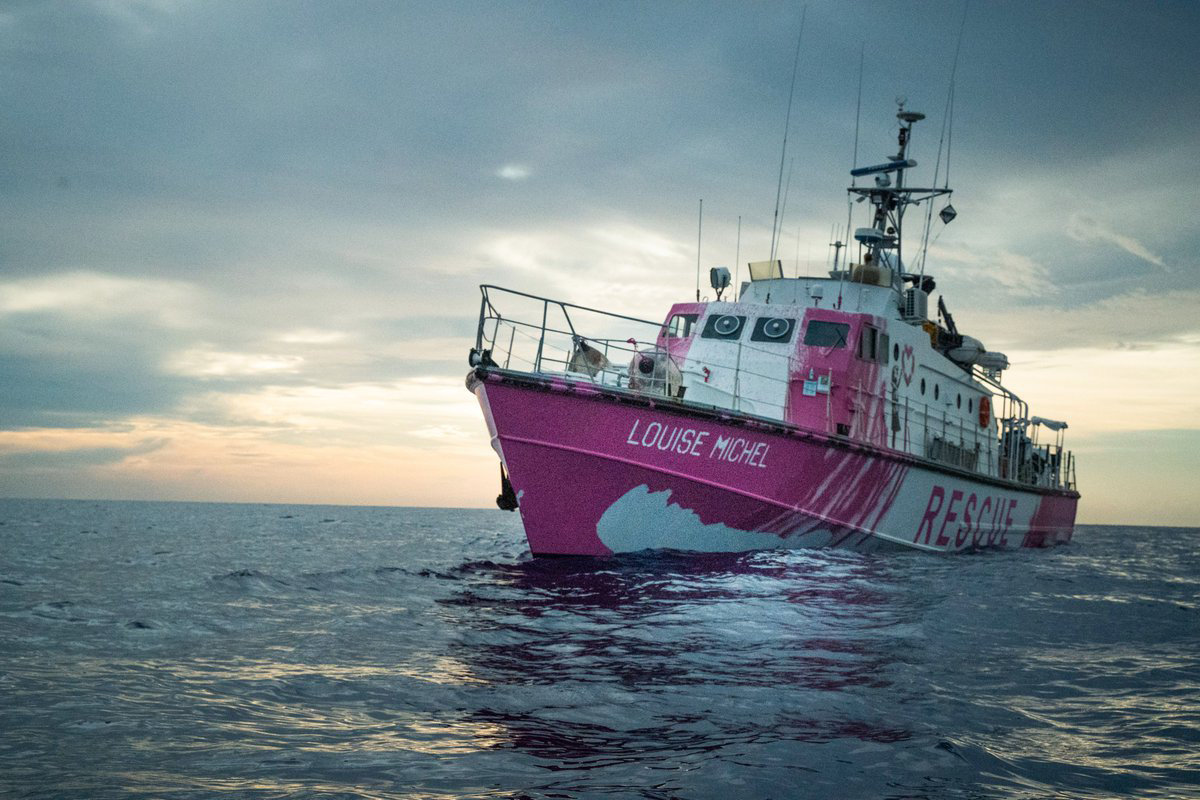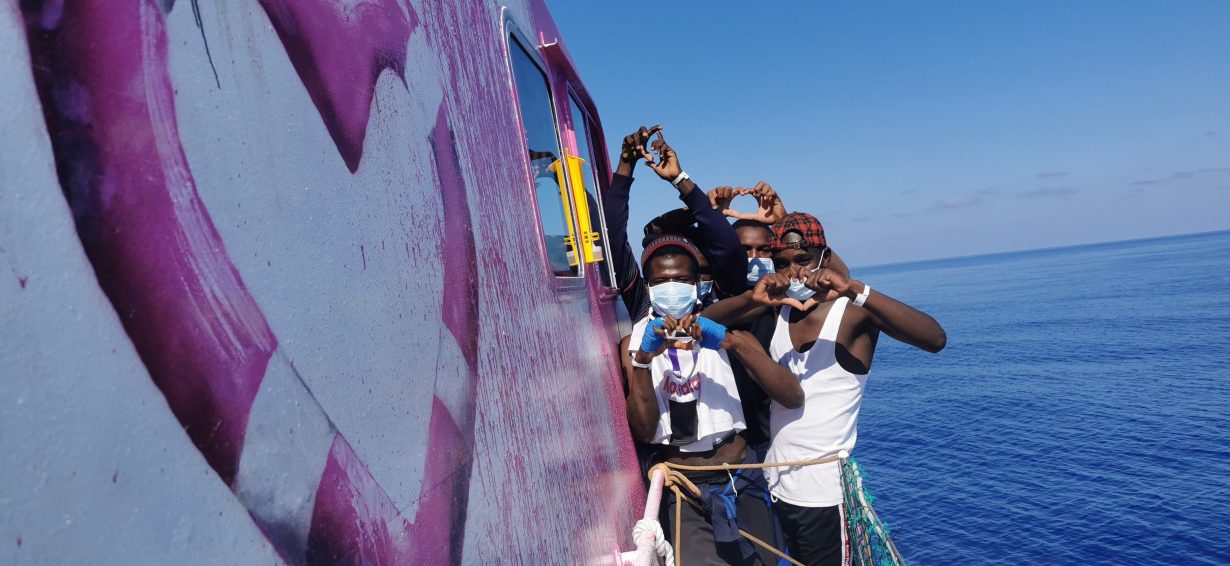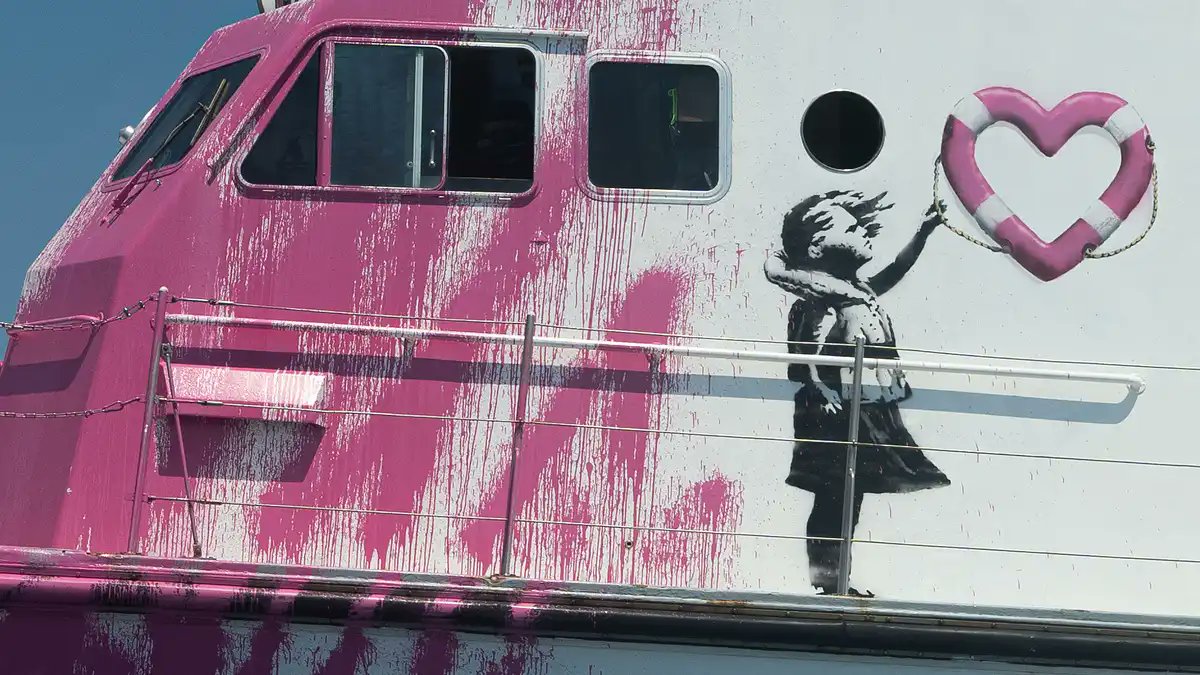Is the search-and-rescue ship, funded by the street artist, simply part of a system that converts humanitarianism into opportunistic spectacle?

The European Union’s persecution of those arriving to its shores continues. Last week, a search-and-rescue ship, funded by the British street artist Banksy was involved in a rescue operation helping hundreds of people in distress in the central Mediterranean. At the time of writing those in the vessel’s care have been evacuated by Italian coastguard and taken on board other ships. Such crossings are sadly common, as are fatalities, with hundreds making the same journey dying this year alone.
This story will renew pressure on those engaged in legal proceedings against these ships and their crews. Since 2018, EU member-states have initiated some 40 administrative and criminal proceedings against crew members of NGO rescue operations – 10 since last year alone – including seizing craft. According to the European Agency for Fundamental Rights, most such search and rescue vessels active between 2016 and June 2020 have been out of action this year, pending vessel seizures, criminal proceedings, along with pandemic lockdowns in European ports. Captain of the Banksy-funded operation, Pia Klemp, has been pursued for ‘assisting in illegal immigration’ in the Italian courts. Some crews resumed their work in June. The vessel funded by the artist departed from Spain on 18 August, and news of its work appeared as an exclusive in the Guardian.

The by-product of the cataclysmic dysfunction of a political system in which governments abrogate humanitarian responsibility, ignoring and defiling people’s human-rights claims, is the emergence of non-state actors to take their place. The Louise Michel, the artist’s rescue vessel, is branded pink, with a copy of one of Banksy’s most saleable artworks reproduced on its flank. His name has featured in the headline along with photography of the work in almost every news outlet’s coverage. ‘Banksy funds boat to rescue refugees at sea,’ reads one search-engine optimised example, the artist’s name situated agentively to satisfy both readerships and the algorithms feeding them. This is not only about the ethics of human life or activism but also about a system of economic and reputational profit that converts humanitarianism and tragedy into an opportunistic spectacle.
In the stories we have seen about ‘Banksy’s boat’, those seeking asylum are depicted as what the scholar Lilie Chouliaraki calls ‘deeply ambivalent figures’: dehumanised, marginalised, deprived of any agency or voice. Such pictures function as uncertain calls to action for European audiences – spectacles of vulnerability, with little or no information about those at these stories’ heart, reduced to shivering, huddled figures in life jackets instead.
Five years on from the death of Alan Kurdi, audiences are inured to such images of suffering from the Mediterranean – repeatedly bounced into news feeds – with measurable change in government policy ambiguous. Instead of opening their borders, many European governments are shifting to the right. Studies of such media coverage see initial empathy and solidarity as ephemeral, and deeply contingent on audiences’ pre-existing values.

A straightforward critique of Banksy’s involvement here does not do justice to the lives saved, or the dignity of those caught up in these events. Nor does it capture the nuances of Banksy’s own complex and antagonistic place within a neoliberal global marketplace. He has long championed social justice causes: the Walled Off hotel in Bethlehem, boosting local jobs; donating profits during lockdown to help the NHS; £2.2 million of paintings sold at auction for a hospital. Without his involvement, editors and European readers fatigued by stories of migrant crossings would not have seen this latest tragedy, and many would not have heard of Klemp. Writing earlier this year in the European Journal of Cultural Studies, Jamil Khader described Banksy’s work in Bethlehem at the Walled Off installation as ‘universalizing the Palestinian struggle for freedom,’ communicating Palestinian people’s message in collaboration with them to draw attention to the neoliberal co-option of their struggle for freedom.
But this latest act is an ambivalent victory. Where once governments paid heed to their responsibility to save lives, now they give way to rescue efforts beholden to the opportunity and risk of strategic communications and private capital. Such spectacles pass. What happens to the people rescued after the news cycle moves on is anyone’s guess – no one bothered to ask.